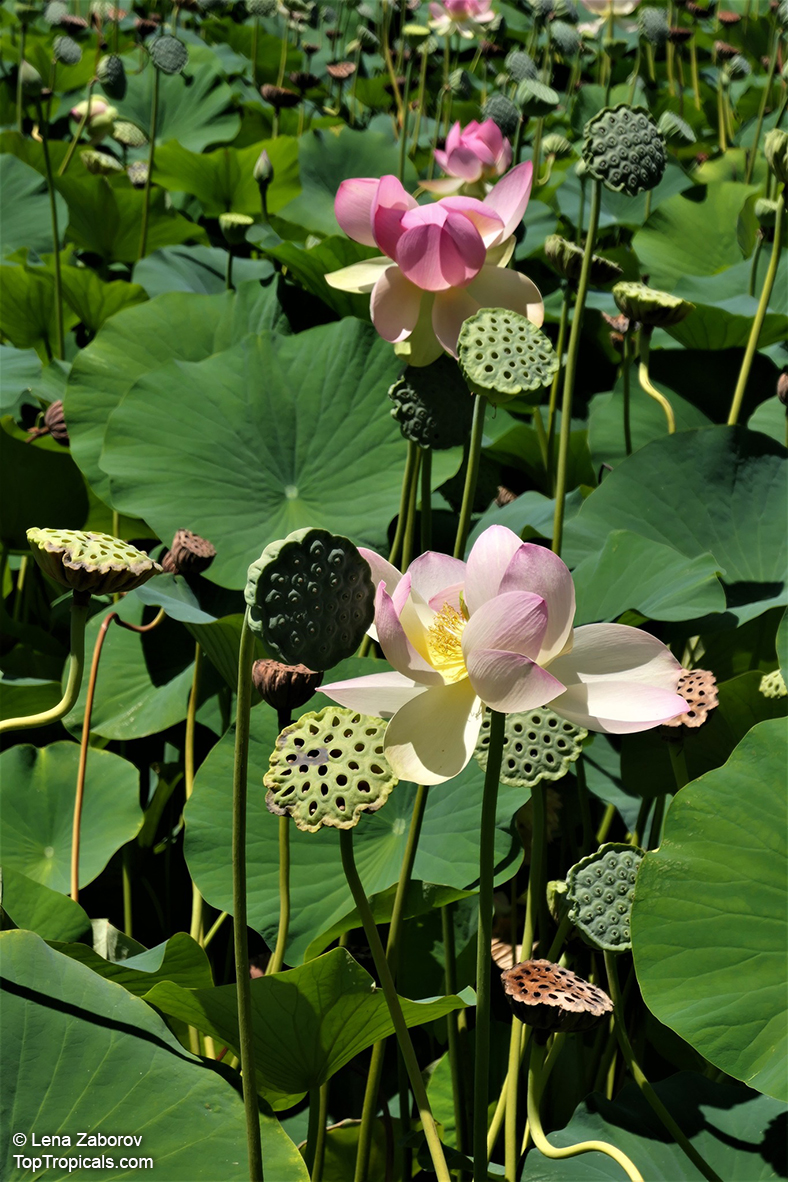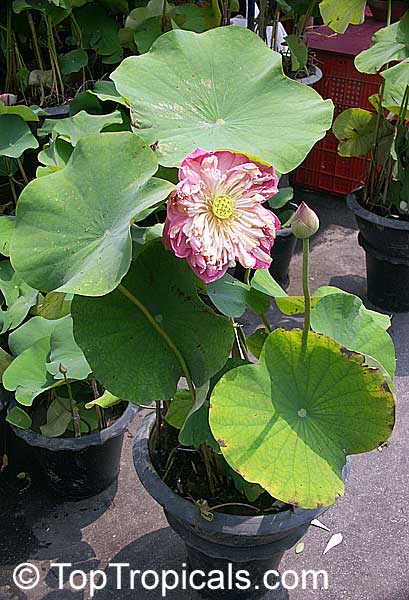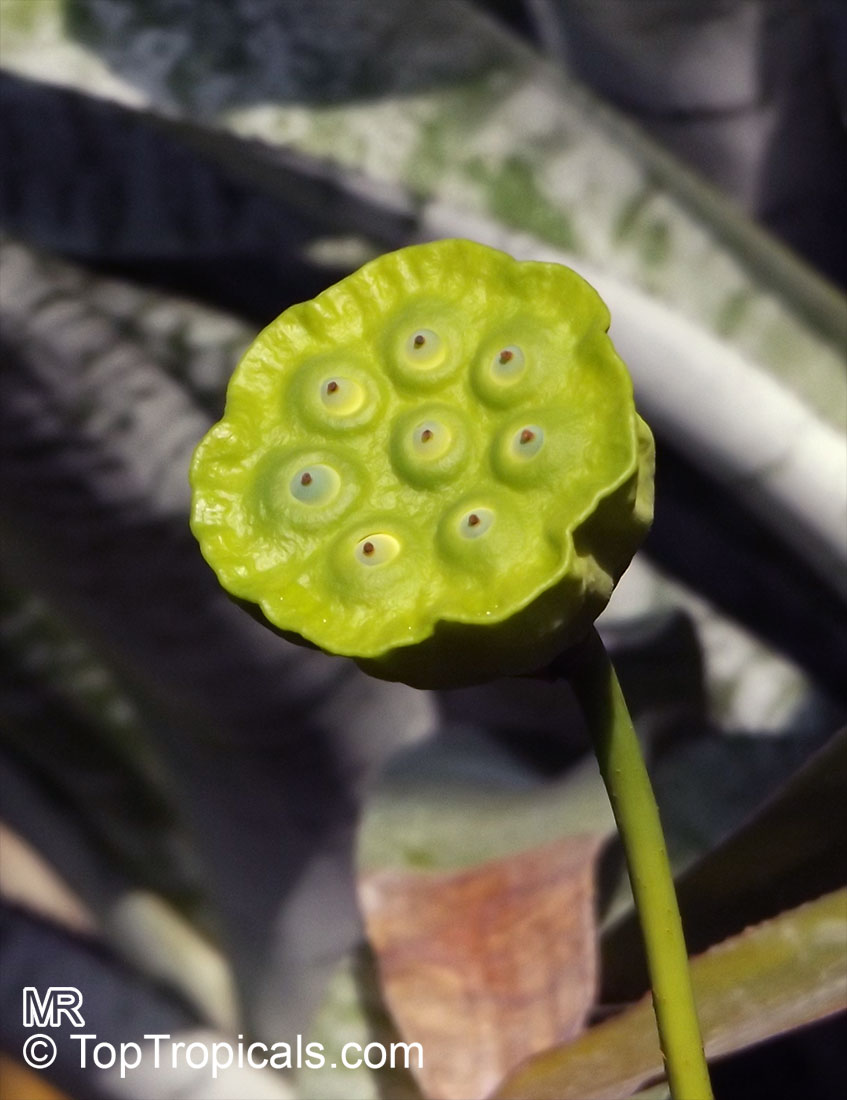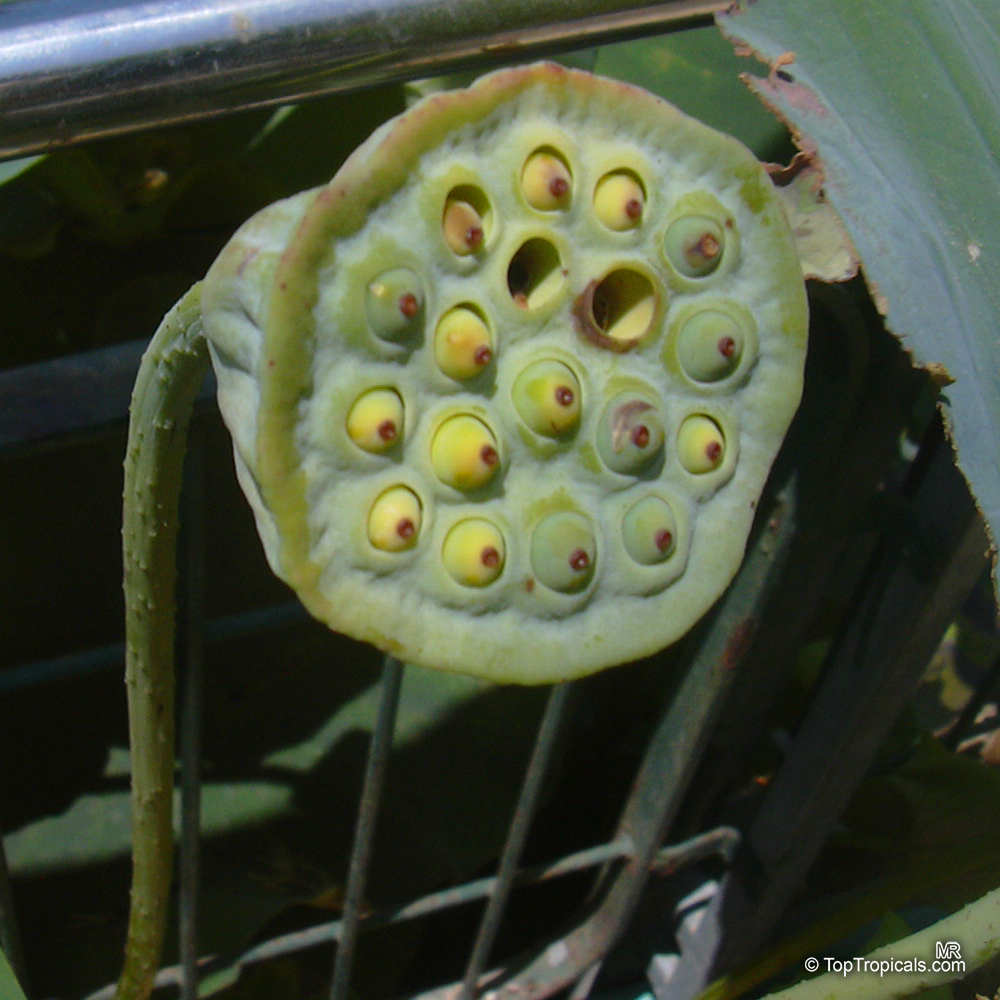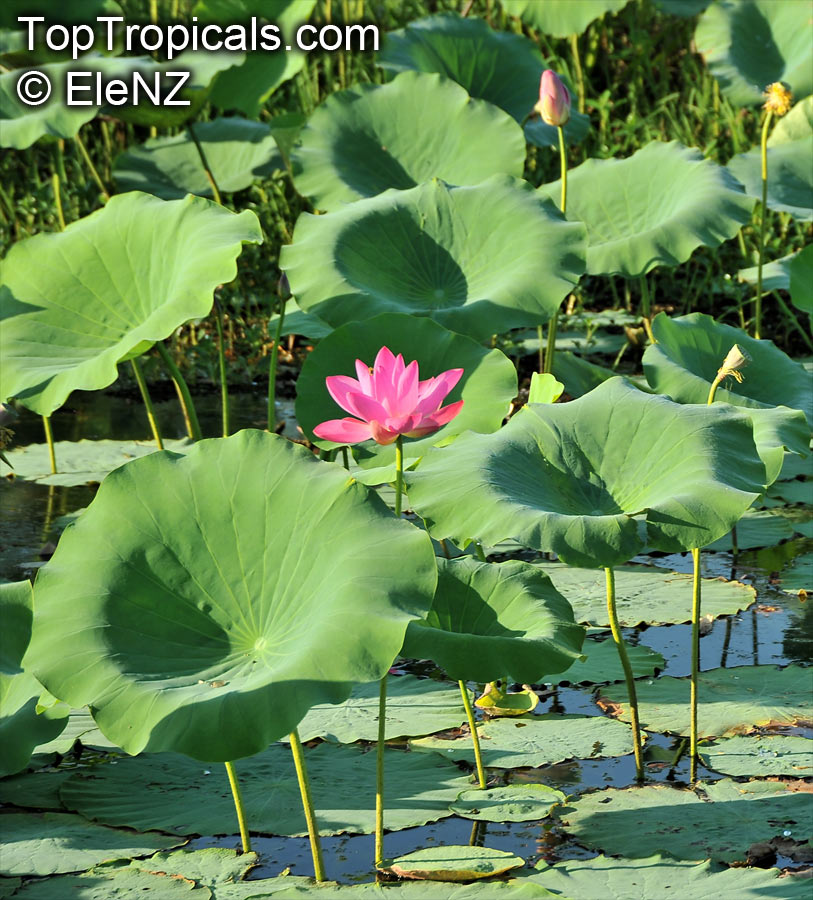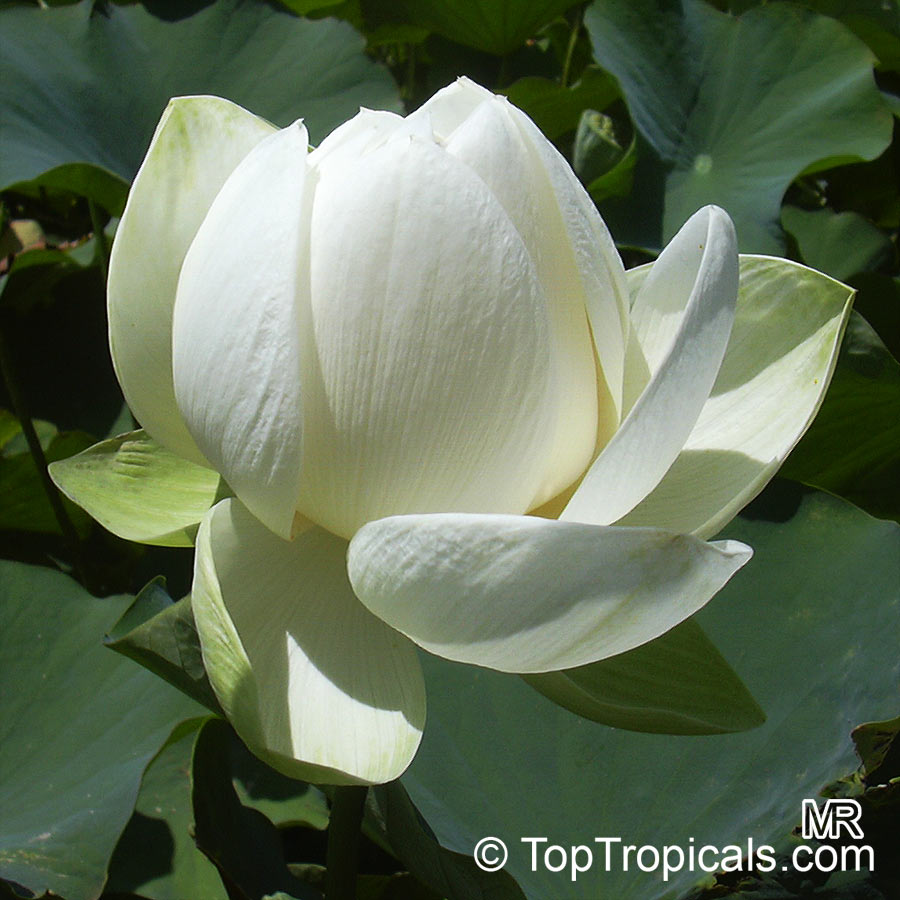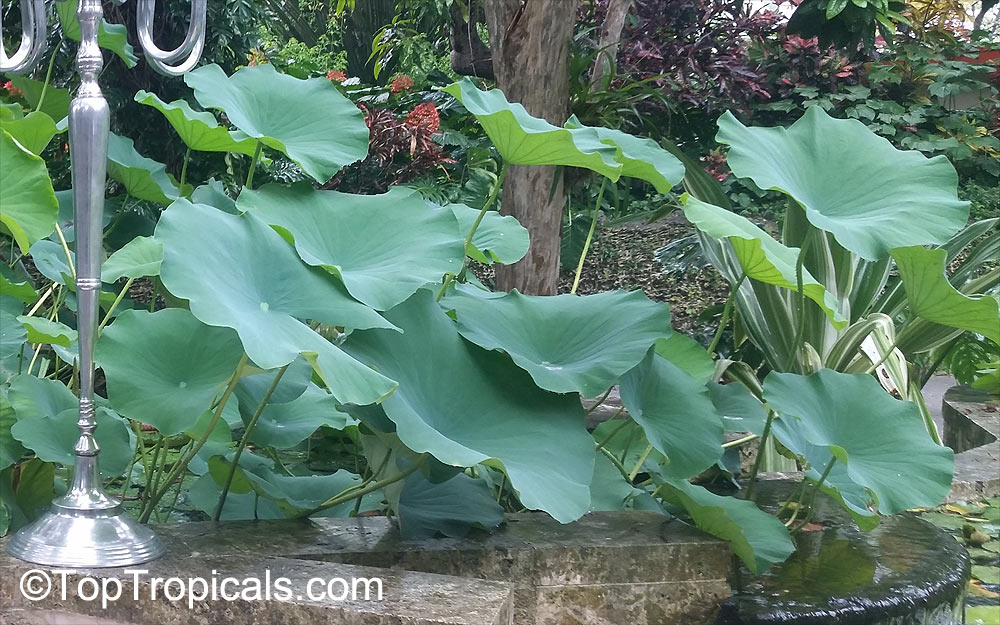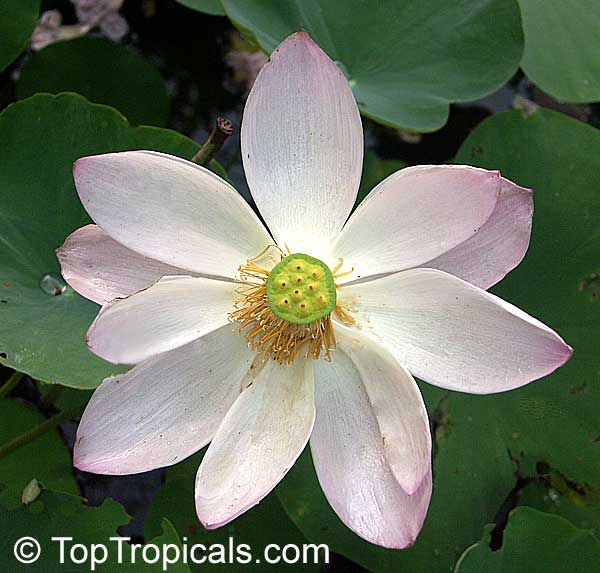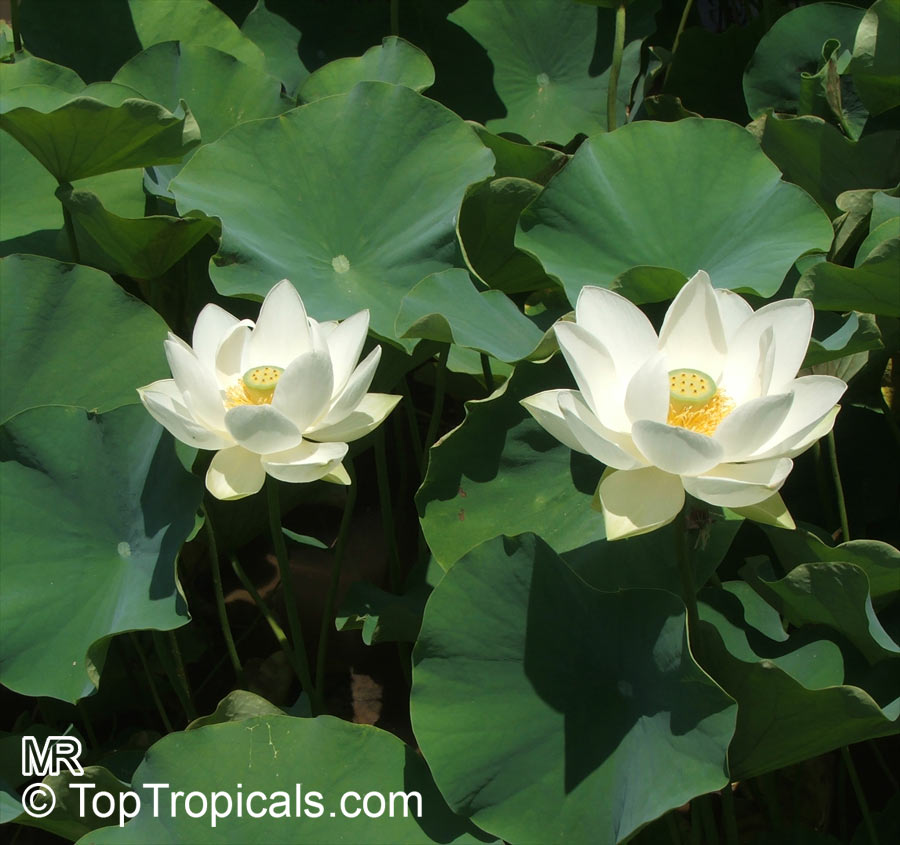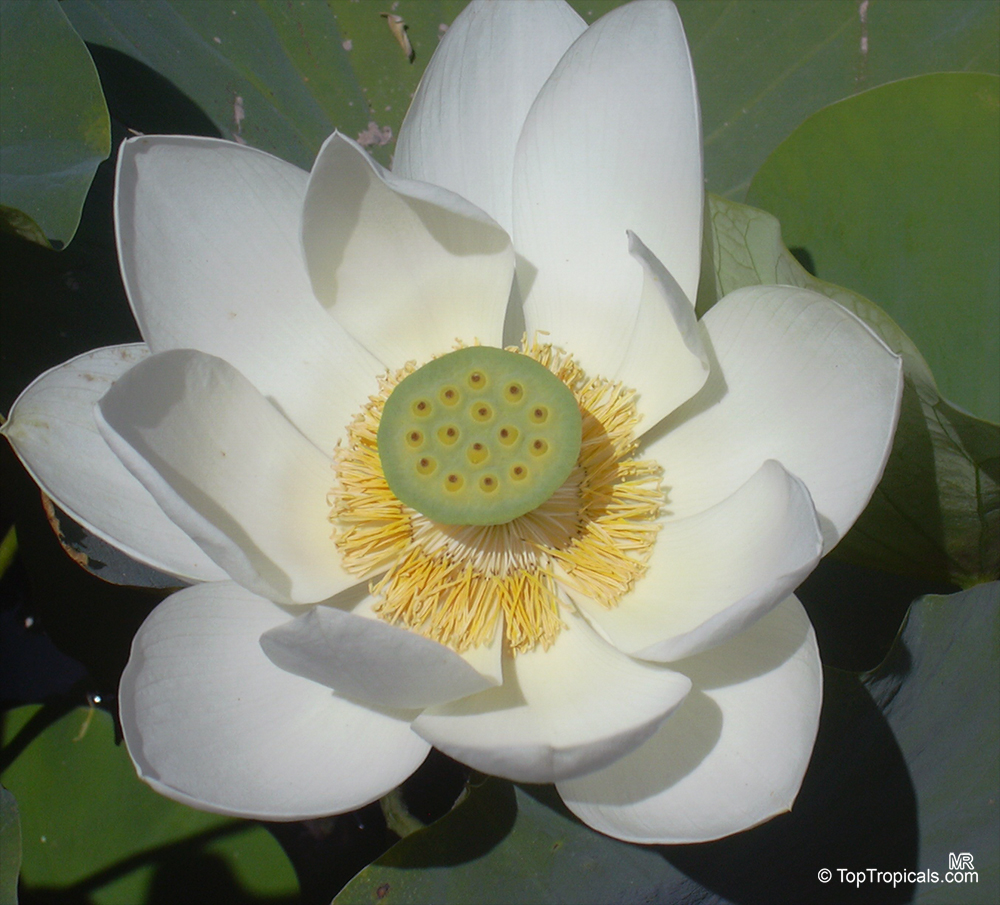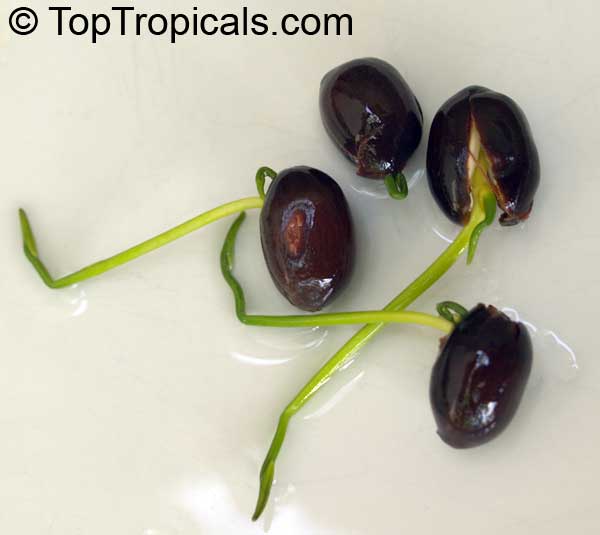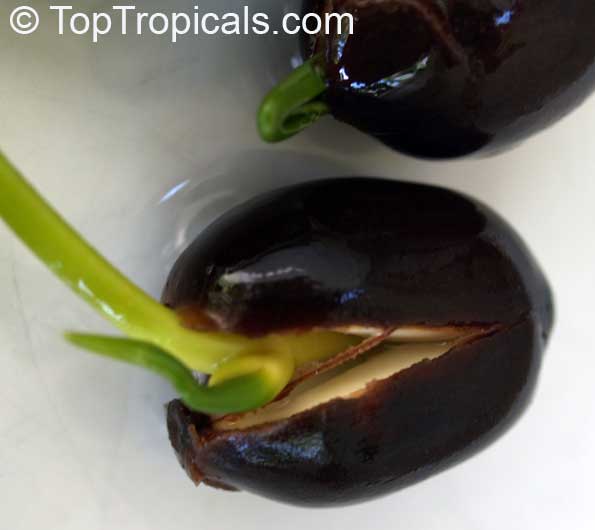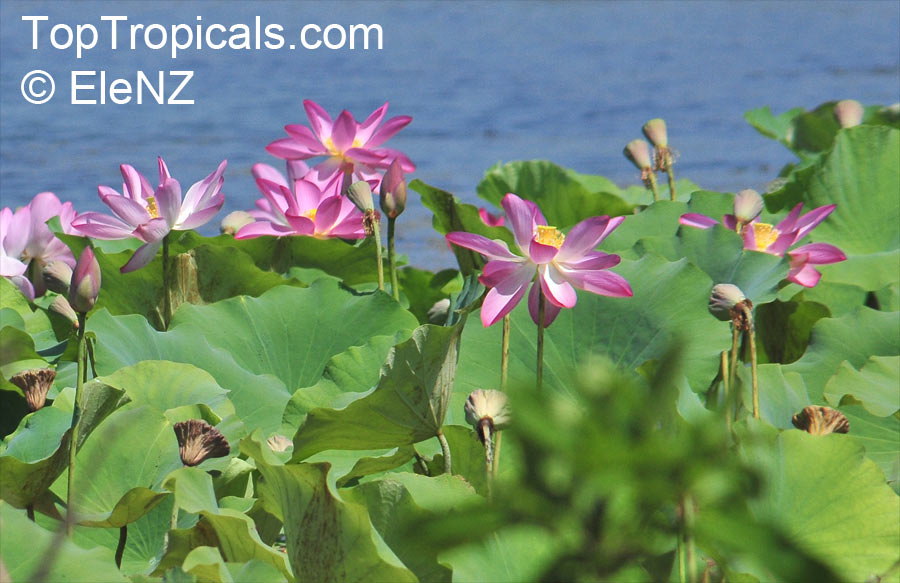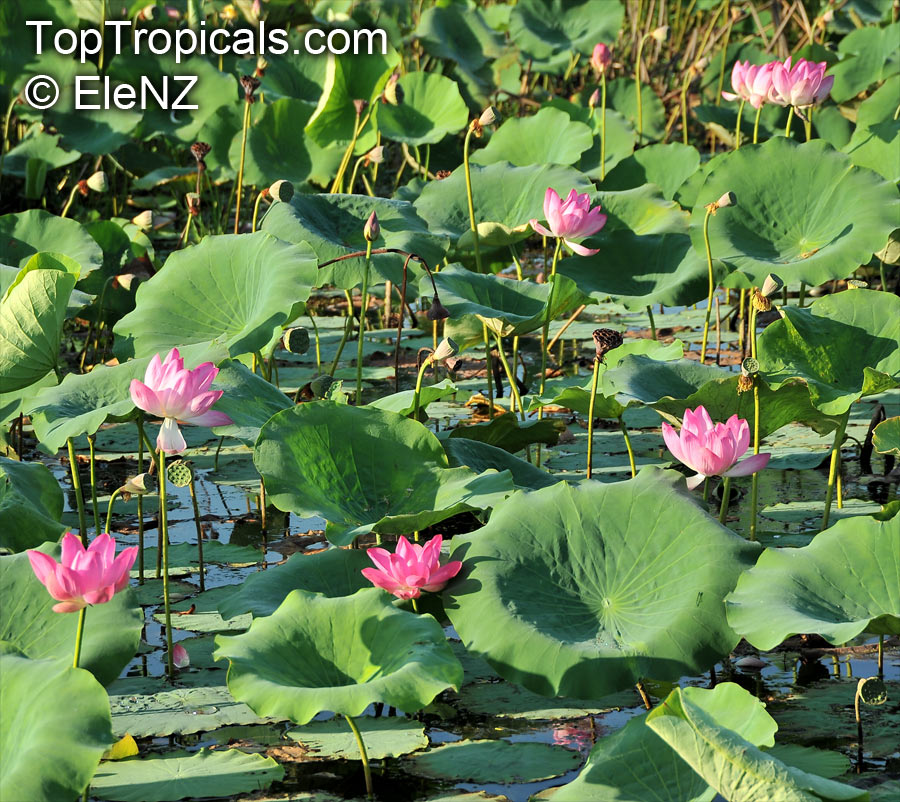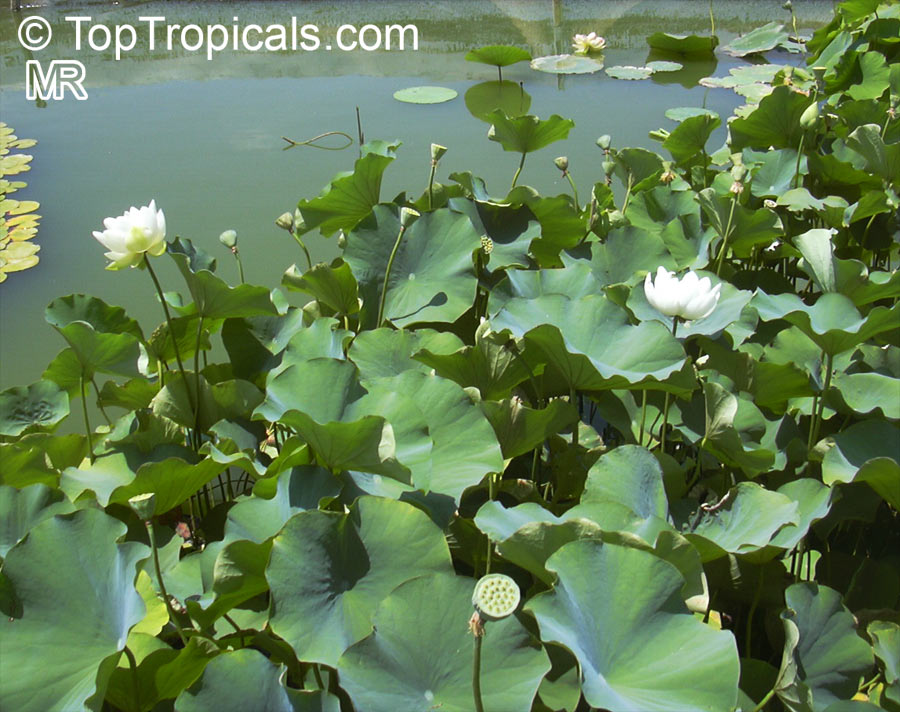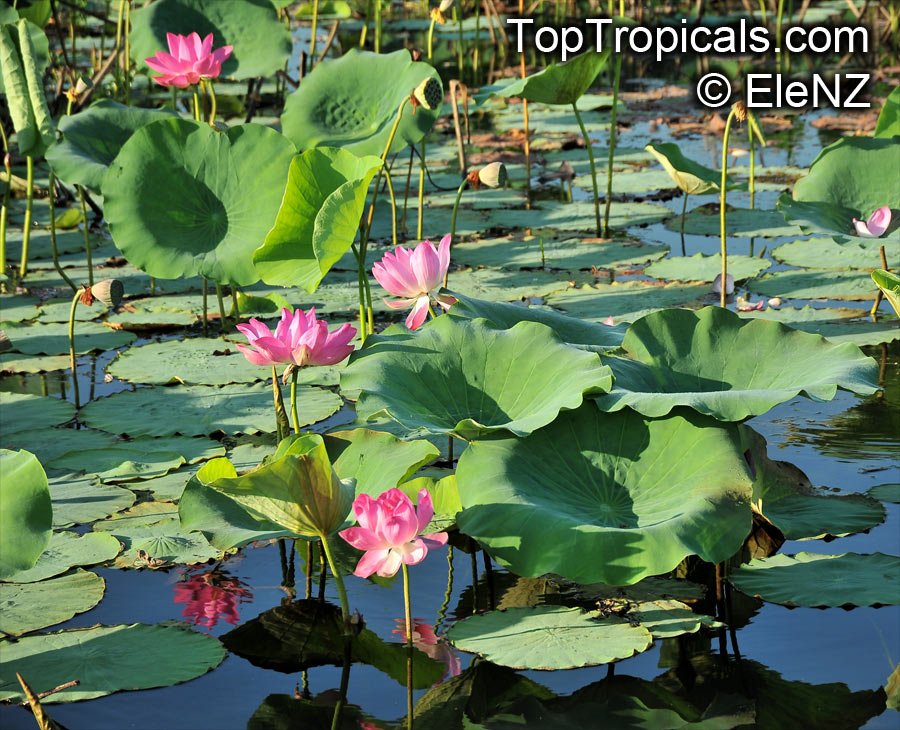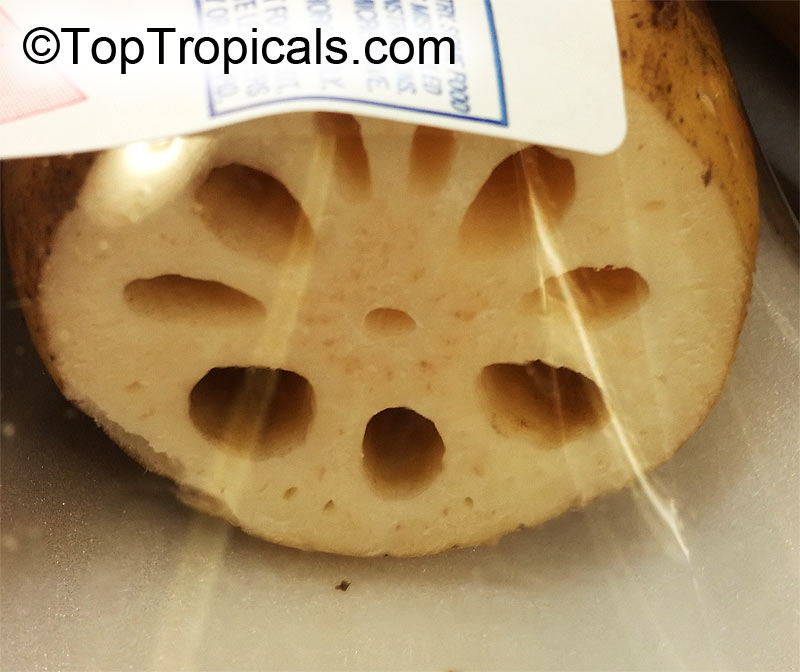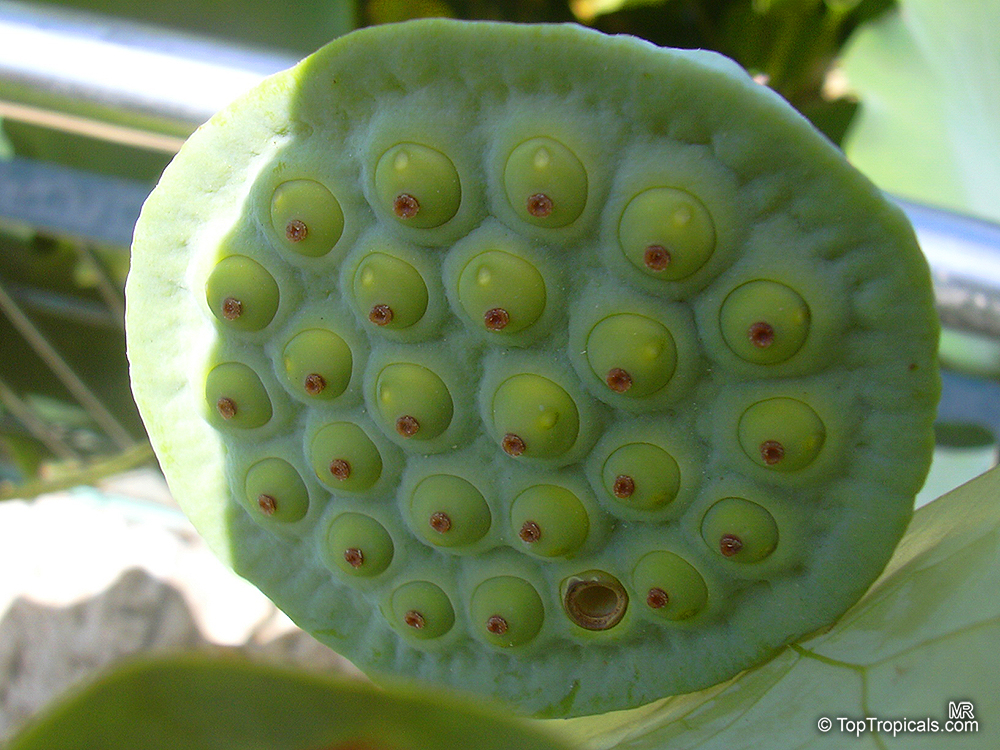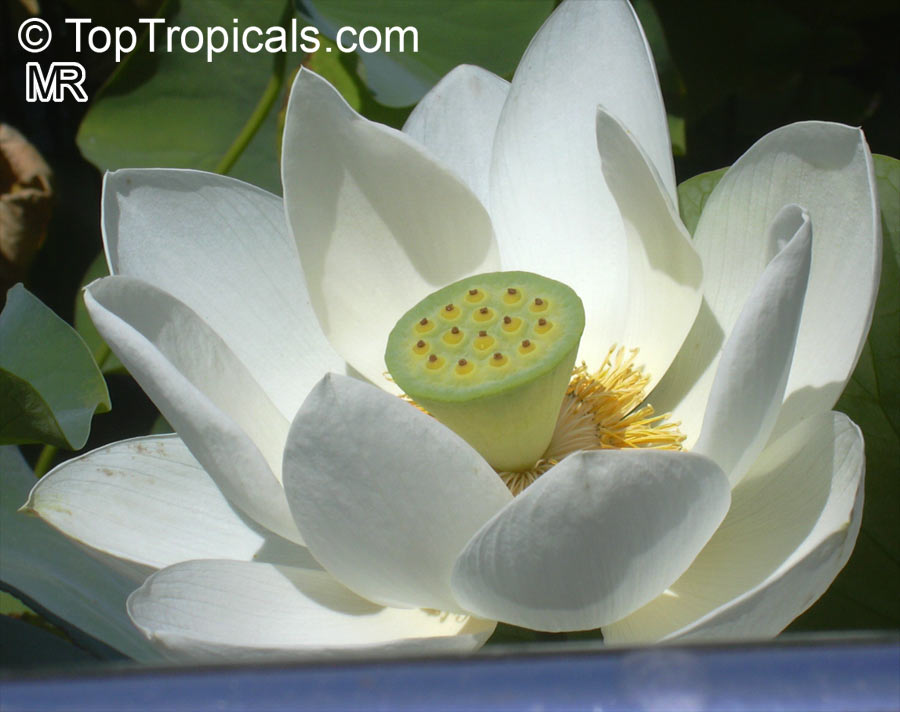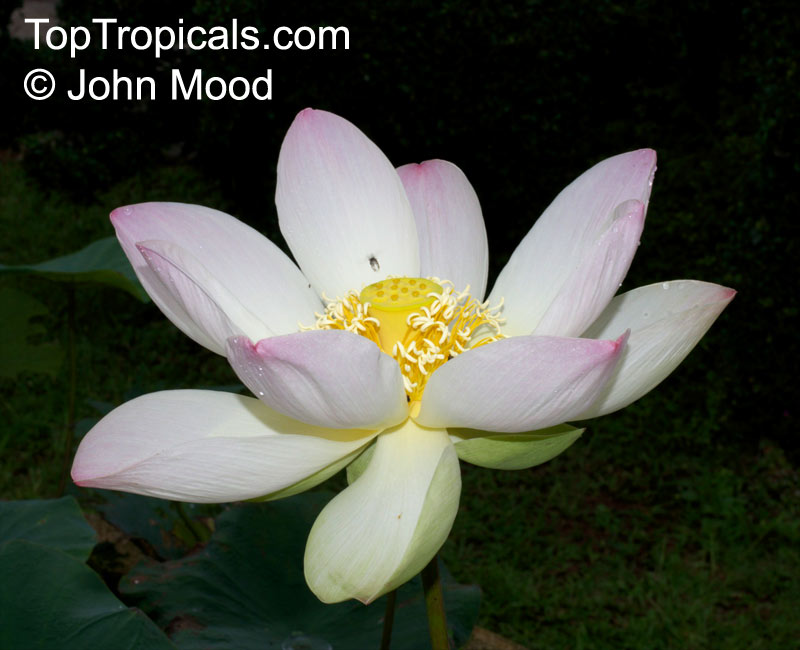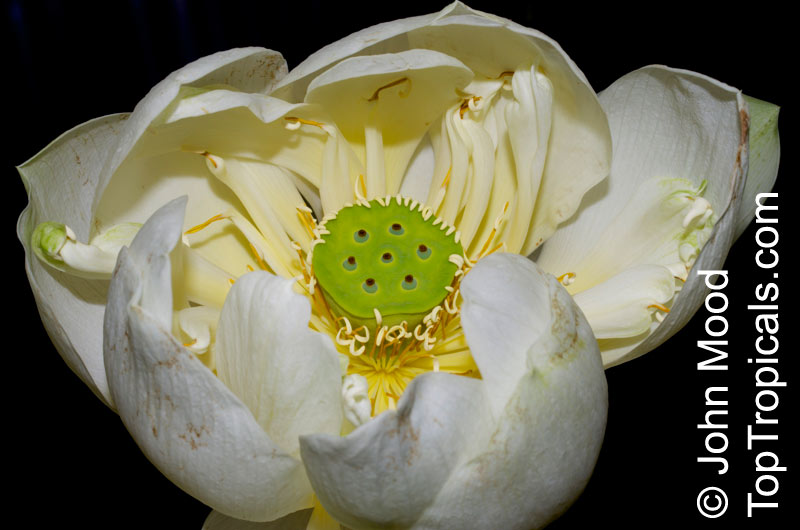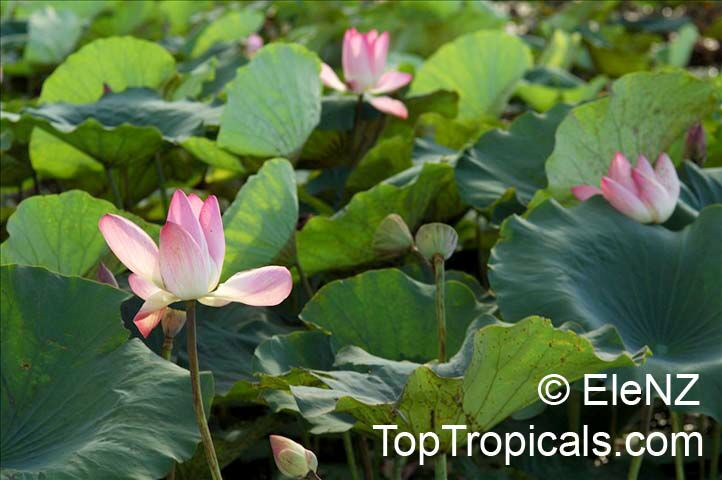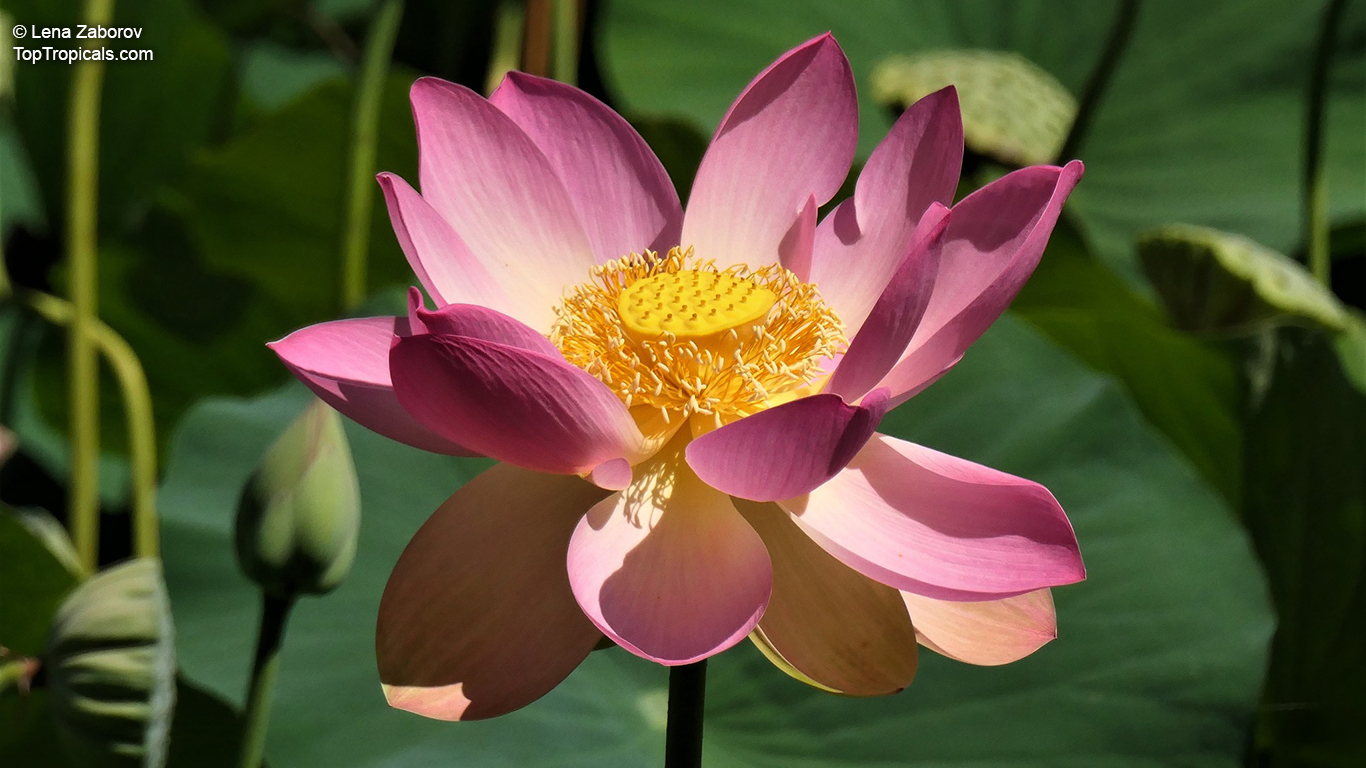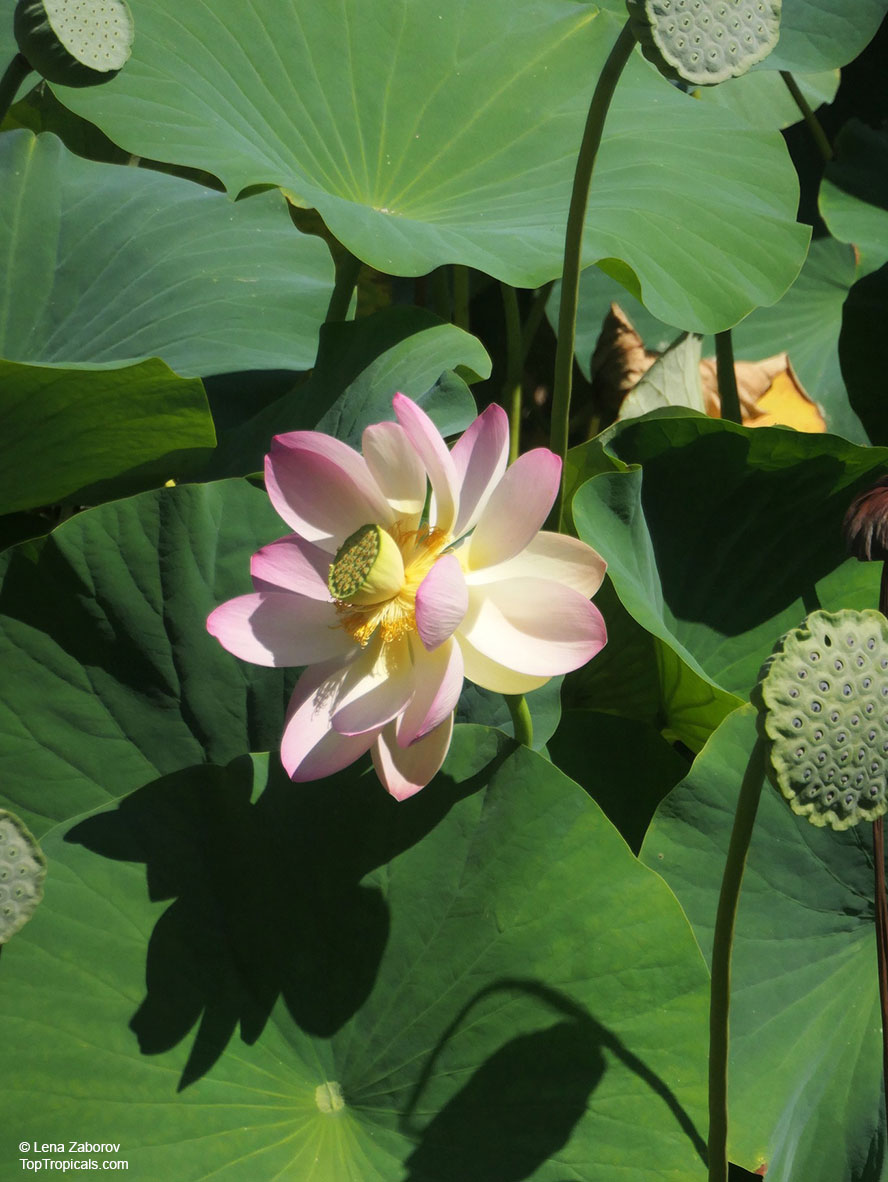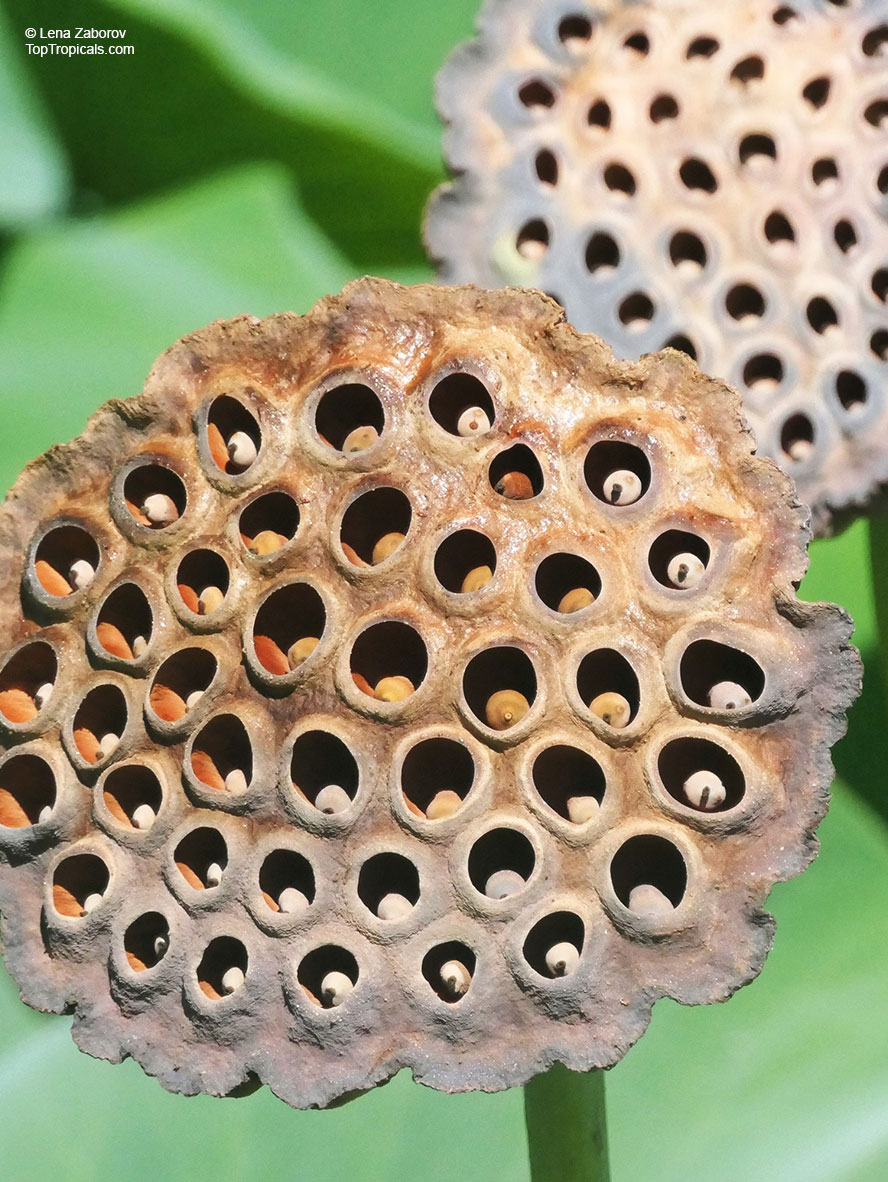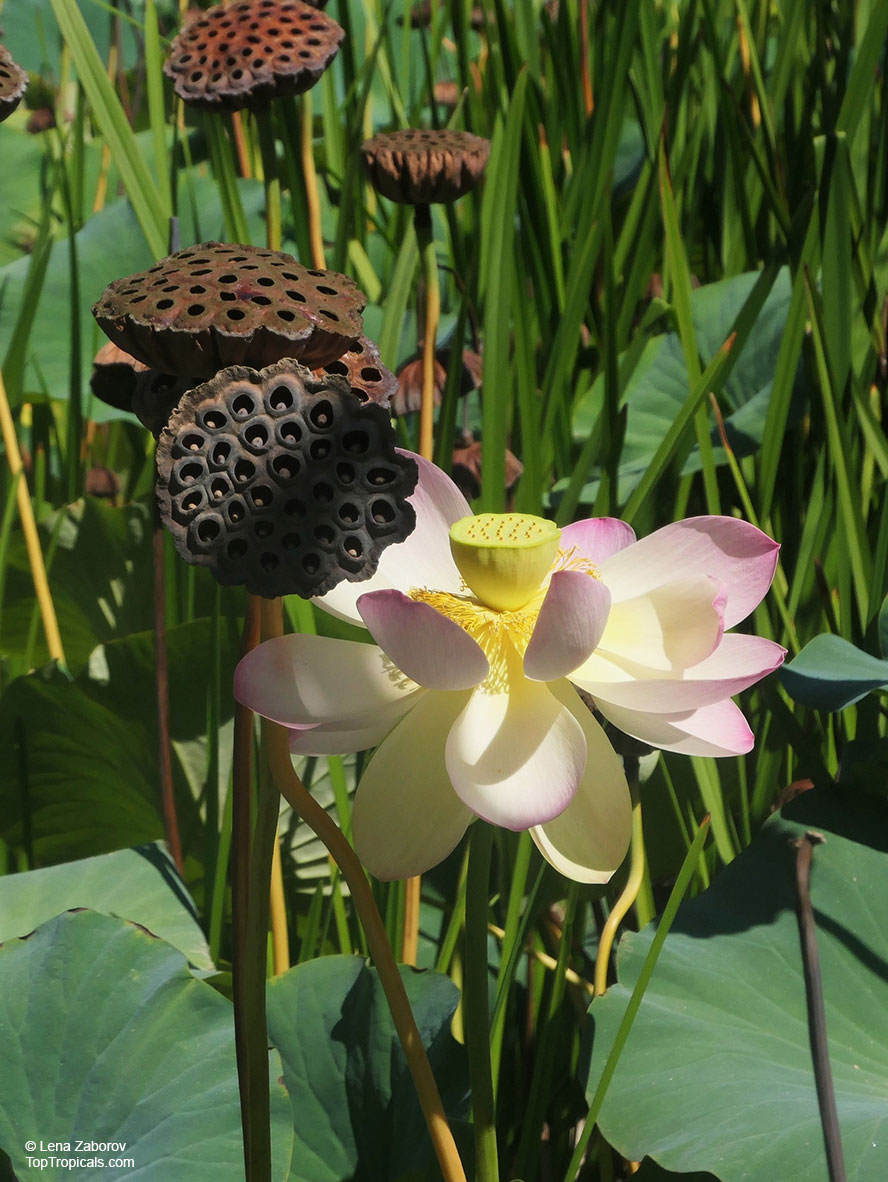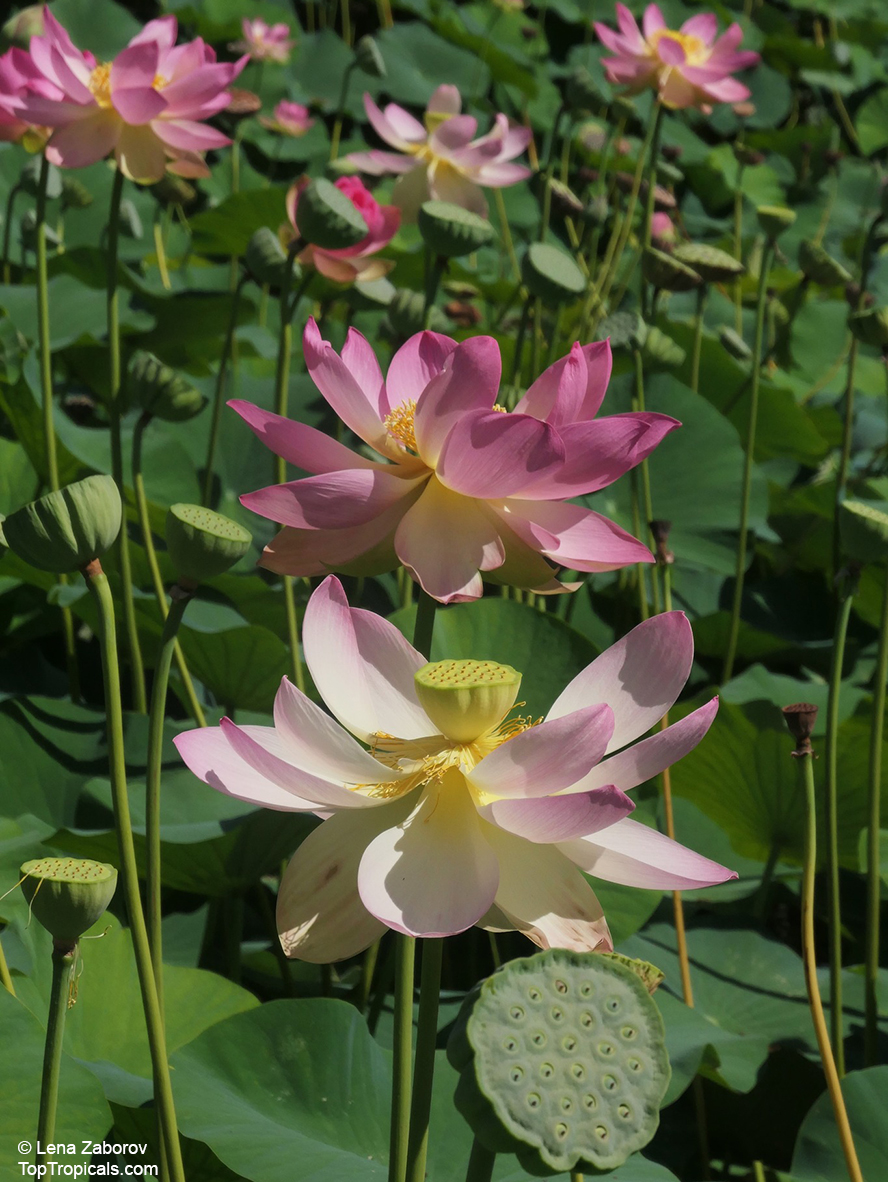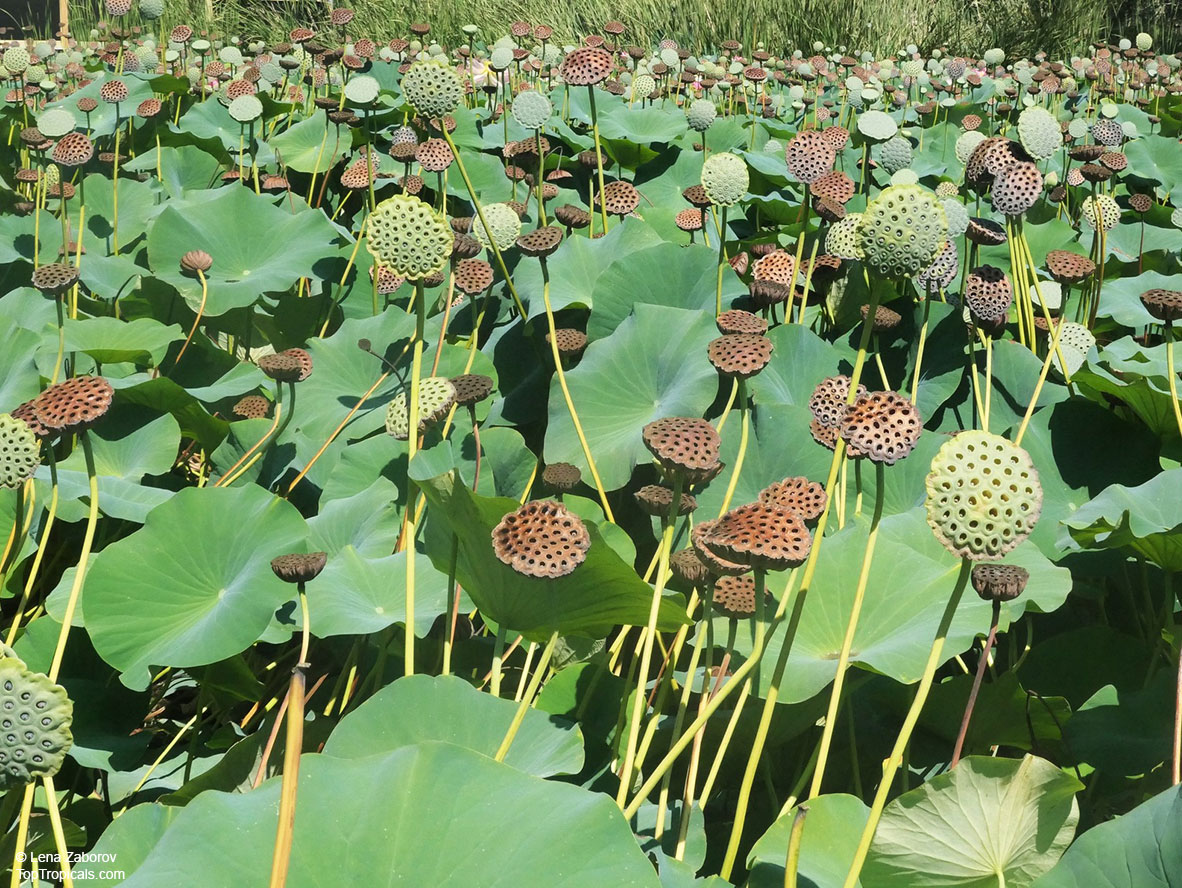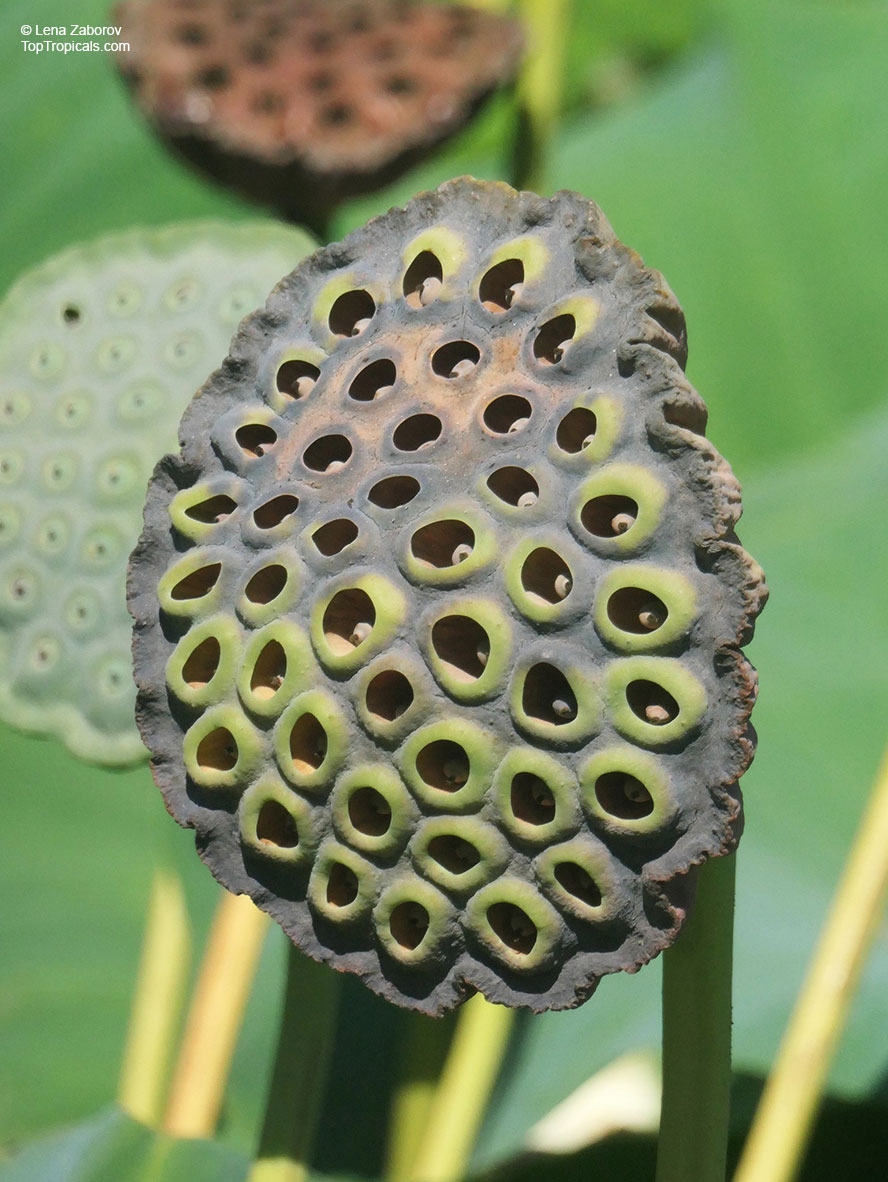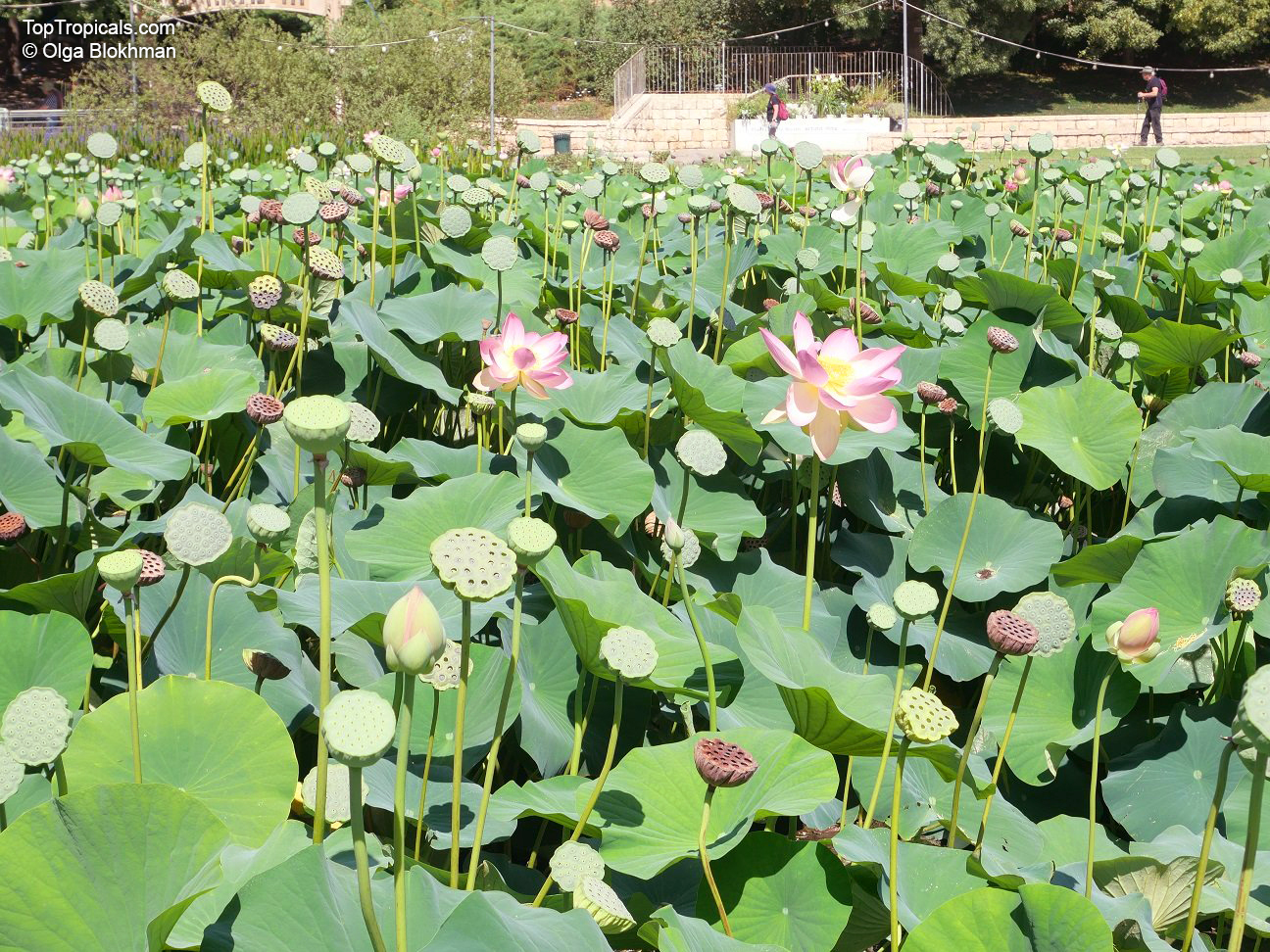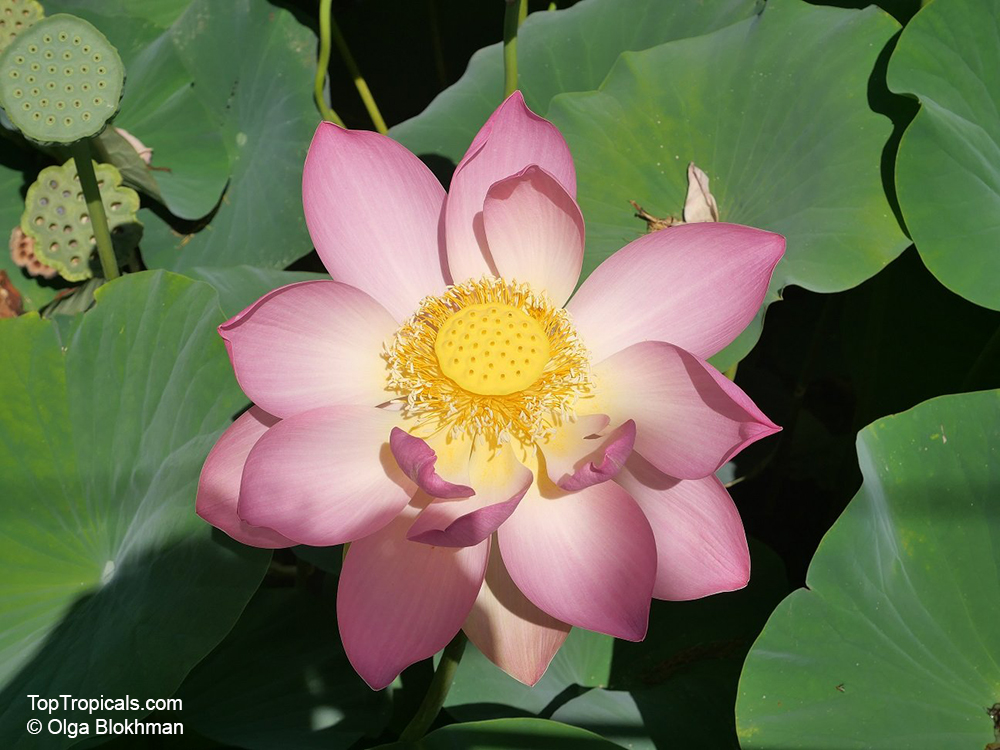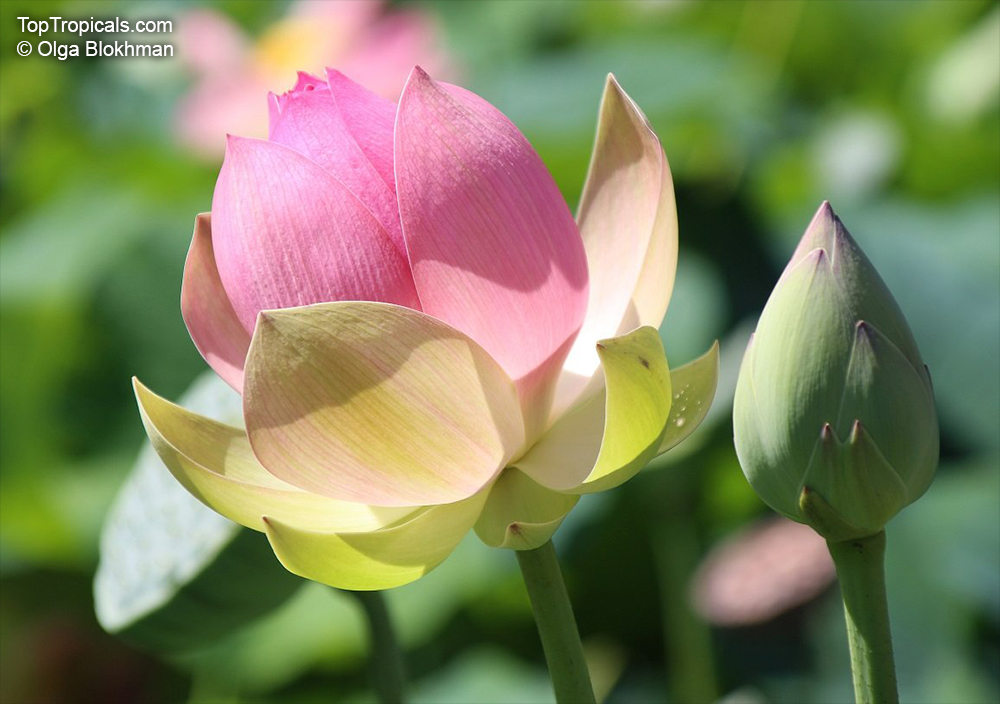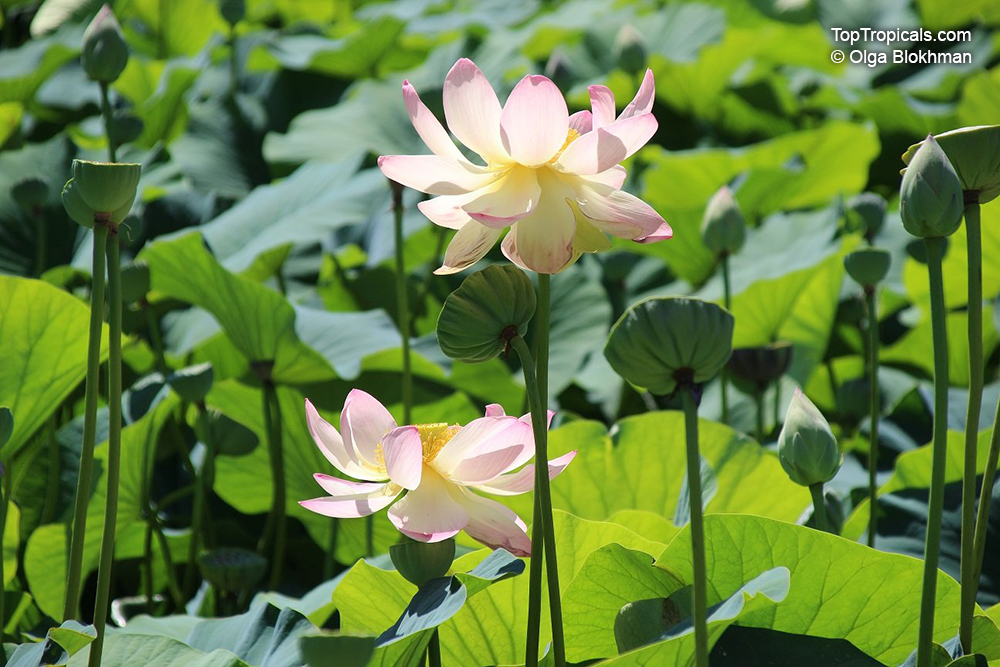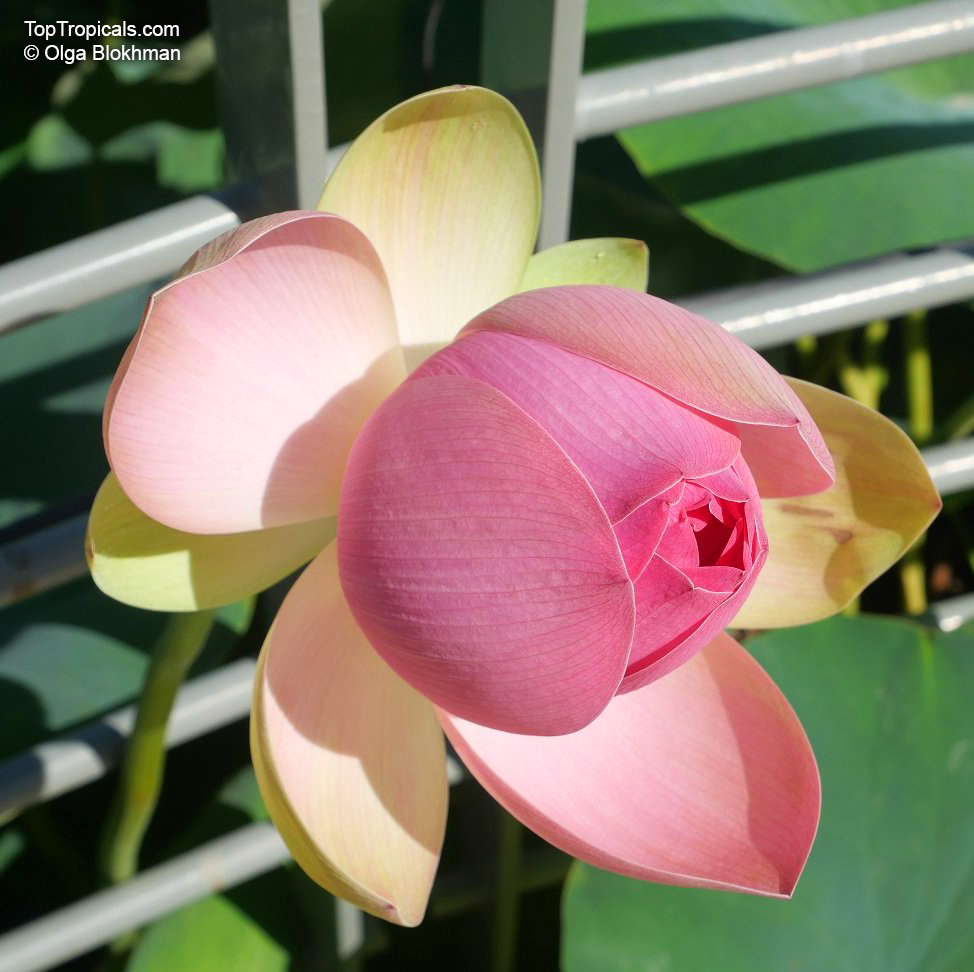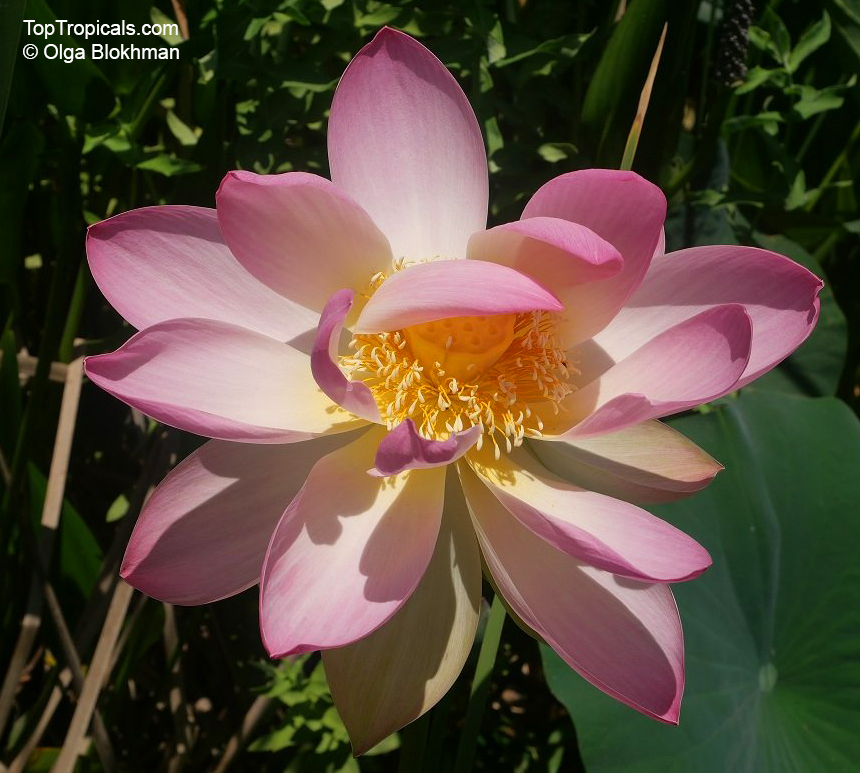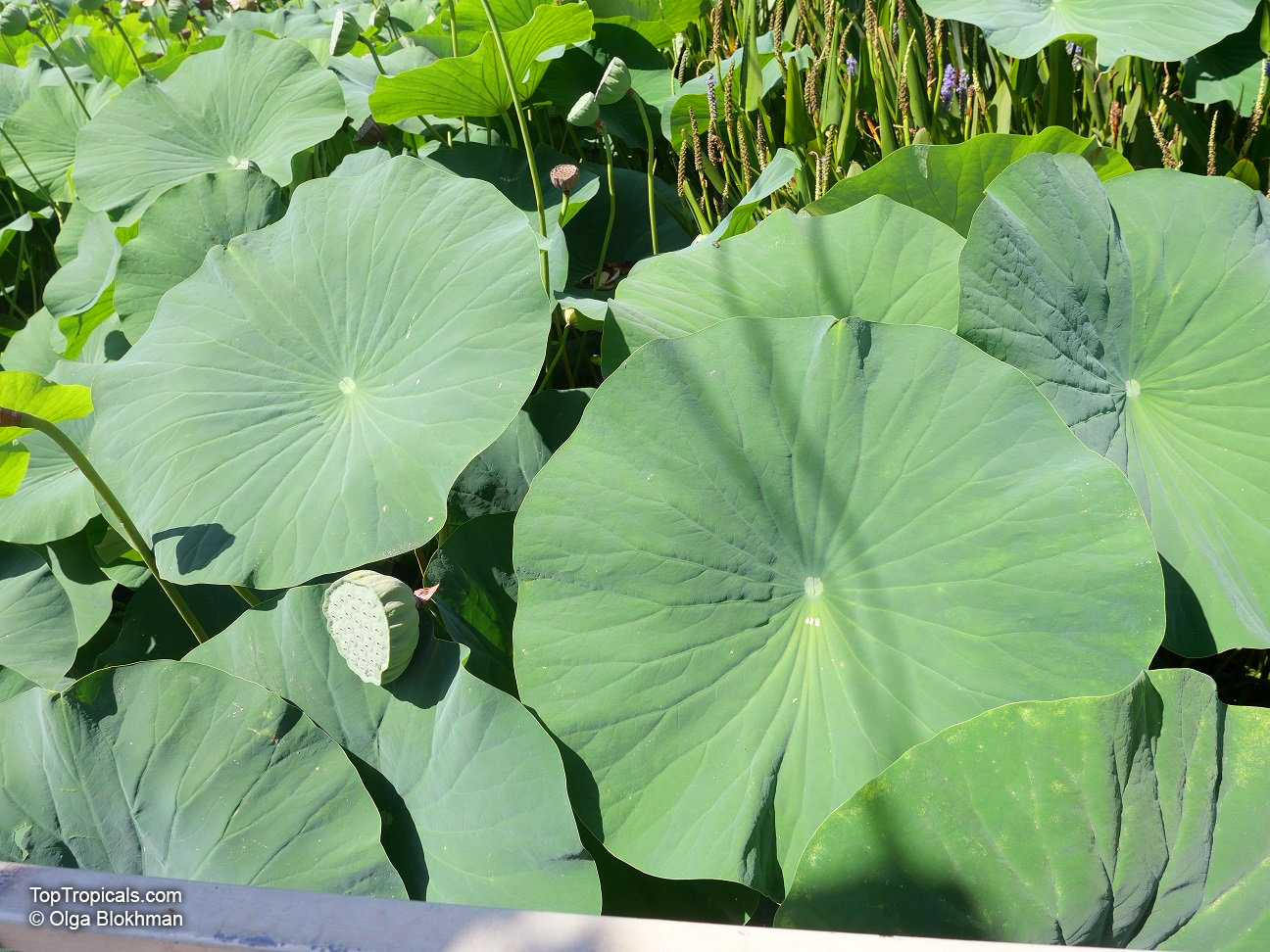Nelumbo nucifera (Asiatic Lotus)
Top Tropicals Plant Encyclopedia
Botanical name: Nelumbo nucifera
Common name: Asiatic Lotus
Family: Nelumbonaceae








A splendid, pure white lotus with a delicate fragrance. The leaves are large and pea green in color. It winters well in colder climates. The seed of the Lotus is a very hard nut and is almost completely impermeable to water. It remains viable for many years; some evidence indicates over two hundred years at least. Resistance to germination is caused by the seedcoat which is almost impermeable to water penetration. The secret for speeding up the germination process is to remove this protective cover without harming the internal seed. This way it may sprout within a few days in a glass of pure water. Make sure to change water in the glass daily as it becomes cloudy within several hours. Keep young seedlings in filtered light. Once the plant develops a few leaves, gradually move into full sun.
Scarification directions by Walter Pagels:
There are two areas where the seed scouring can take place: on the side or at the dimpled end. The side is better because the progress of the rubbing (or sanding) is more uniformly determined. When scouring the side, rub the seed in one area only. This will produce a shiny flat surface as the rubbing proceeds. This surface should be inspected frequently to check the process of the wearing away process. At first, the surface is a uniform black color. As the rubbing proceeds, a thin white line circle or oval will appear, depending on the seed type. This indicates the breaking through of the junction between the two fused seed coats. At this point you can stop the rubbing. If you have missed this point in the rubbing process (it is sometimes difficult to see), and you continue on rubbing, you will eventually see a cream colored area coming into view in the center. If you stop here you will still have satisfactorily rubbed the seed. If the area suddenly brightens into a clear cream color with a distinct edge, it means you have broken into the cotyledon. This opens the seed to possible fungal infection. But save the seed anyhow, it may survive.
